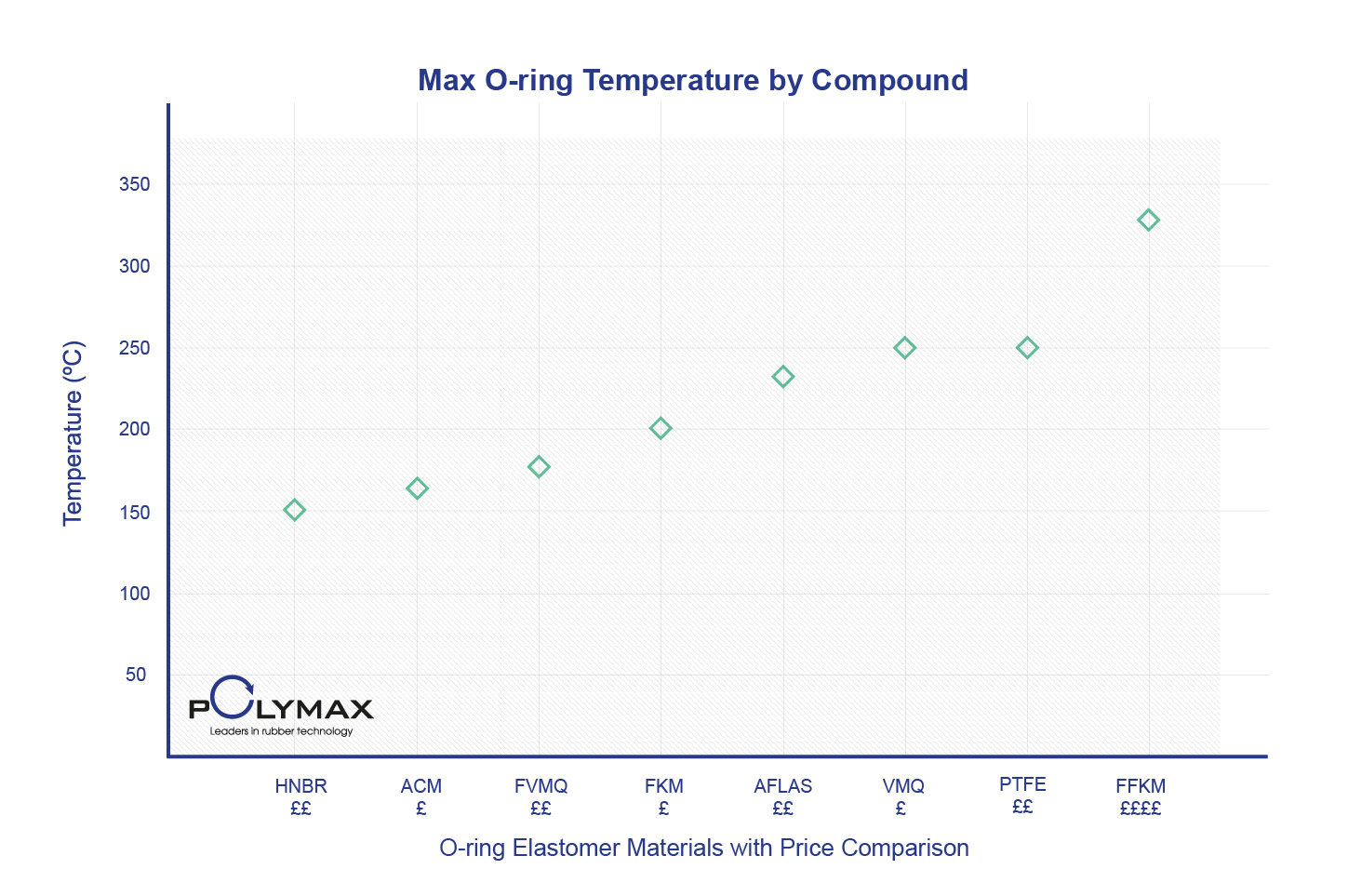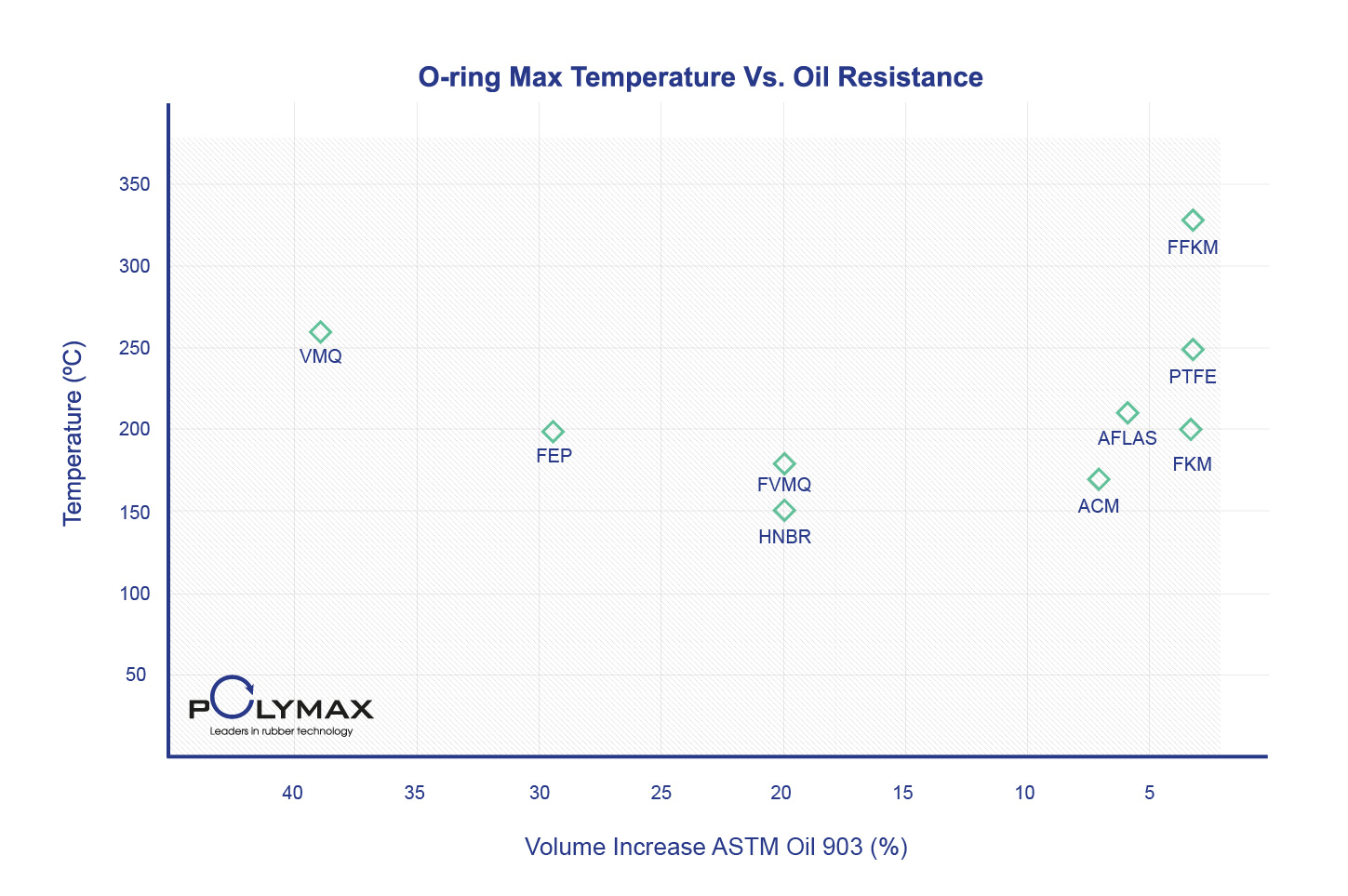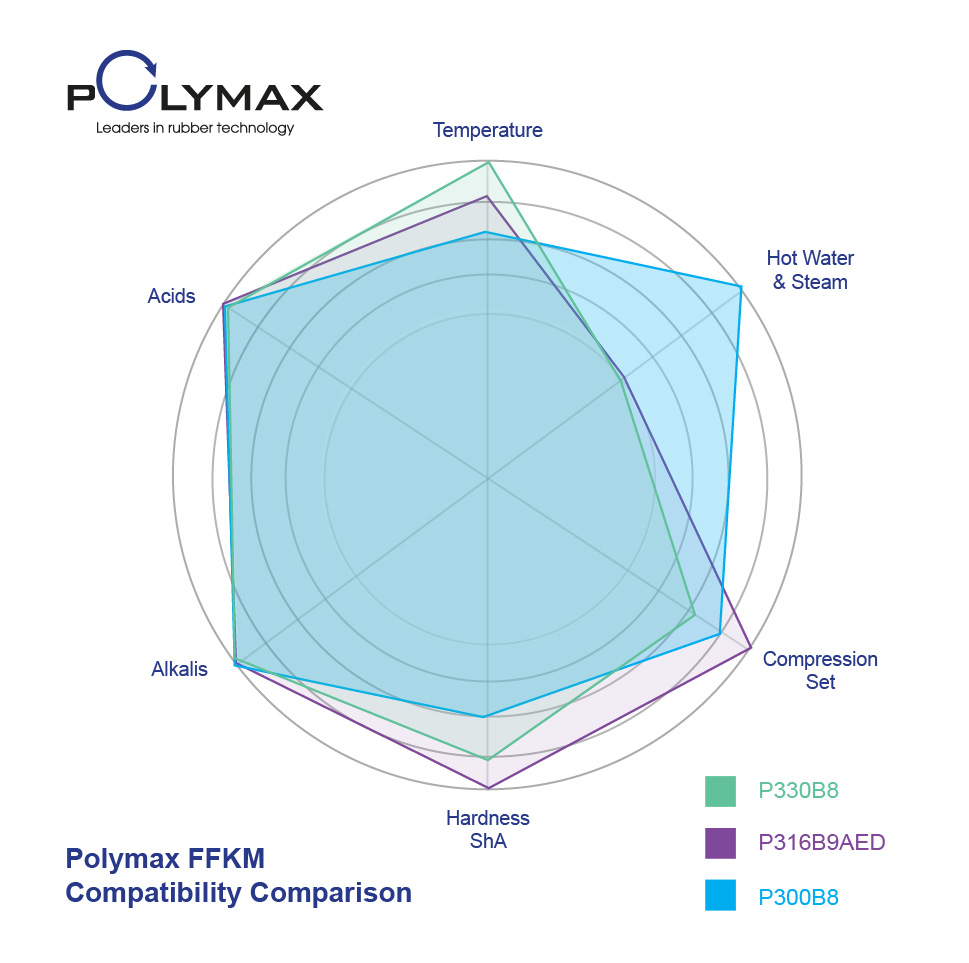Heat is one of the most destructive forces in compound deterioration. To decide which is the best high temperature O-ring, it is important to consider other factors such as the required chemical resistance. For high temperature applications (over 150°C) you may wish to consider using one of the following materials; FKM, FFKM, ACM, HNBR, VMQ, FVMQ, AFLAS, PTFE and FEP.

Automotive Oils, Gases and Fuels
A great all-round O-ring material, Viton® (FKM) delivers great resistance to a variety of oils, greases and fuels at high temperatures. It’s impervious to mineral oil, ASTM oil No.1 and No.2, non-flammable hydraulic fluids, silicone oil and grease. Additionally, it is also compatible with many types of hydrocarbons. Whilst not recommended for use with brake fluids, ammonia solvents, strong acids or superheated steam.
Comparatively, some customers find Polyacrylate (ACM) to be an economic alternative to the more popular Viton® rubber. ACM compounds can resist mineral oils such as gearbox, engine and transmission fluids. Like FKM, they have poor resistance to brake fluids. ACM O-rings operate at a slightly lower service temperature of 150°C (177°C intermittent) compared to that of Viton® (200°C).
For automotive sealing that requires a tough abrasion compound, we'd recommend Hydrogenated Nitrile (HNBR). With a top temperature of 150°C, it’s compatible with automotive oils, gases and fuels such as aliphatic hydrocarbons, hydraulic fluids and dilute acids. However, HNBR is not recommended for use with chlorinated hydrocarbons, polar solvents or strong acids. Also note that it has limited resistance to brake fluids.
Alternatively, AFLAS® (TFE/P) covers most chemical mediums used in automotive sealing. It's able to withstand a maximum temperature of 232°C and although compression set does suffer at this level, it is still has many uses. For example, it is suitable for use with all types of brake fluids including DOT 2, 3, 4 and 5. It’s also great for use with different types of motor oils, engine coolants, rust inhibitors, gear lubricants, transmission and power steering fluids. AFLAS® O-rings can withstand contact with amines, acids and bases. AFLAS® is not compatible with aromatic fluids, ketones or chlorinated hydrocarbons.

Other High Temperature O-rings
In addition the materials discussed above, silicone (VMQ) also demonstrates excellent high temperature resistance (up to 250°C). Some variants of this material capable of withstanding up to 320°C. Commonly used for high exposure to UV, ozone and weathering but not suitable for any chemical, hot water or dynamic applications. The fluorinated version of silicone, fluorosilicone (FVMQ), offers a vast improvement with regards to resistance to fuels and minerals but also demonstrates poorer hot air capabilities.
Universally Resistant Compounds
There are two types of materials that are in a league of their own when it comes to chemical and temperature resistance. These are namely perfluoroelastomers (FFKM) and PTFE (as known as Teflon®). Both of these compounds contain a high molecular weight of carbon and fluorine, which make the polymer difficult to degrade. However, FFKM and PTFE possess very different mechanical properties. PTFE is a hard inflexible thermoplast, whilst FFKM is classed as a thermoset elastomer. Thermoplastic polymers can be melted and reset into different shapes, whereas thermosetting polymers retain their original shape. FFKM is essentially a mixture of FKM and PTFE, combining elastomeric properties with great chemical resilience and resistance to heat.
PTFE O-rings
PTFE is chemically inert. As a result it has unrivalled chemical resistance; unaffected by all known acids, alkalis and solvents. It has a very low coefficient of friction and and a very wide temperature range, all the way from -200°C to 250°C. Traditionally machined from hard billet material and supplied as O-rings, washers or back-up rings (or anti-extrusion rings). Unlike other elastomeric (flexible) materials, PTFE is very hard therefore it suffers from a very high compression set, in other words, it has little or no memory - e.g. it is easily dented.
FEP O-rings
FEP is part of the PTFE family of materials. It is an extrudable variant of PTFE, exhibiting many of the same characteristics mentioned above. The maximum temperature resistance of FEP is 204°C and it encapsulates standard elastomeric cores such as silicone or Viton®. We are able to supply almost any size of FEP encapsulated O-ring using a special method of joining extruded lengths. FEP seals have chemical and heat resistance similar to that of PTFE whilst being more flexible. Their compression set is not comparable to that of elastomeric materials but in static applications where there is aggressive media, such as in pumps for example, they are often an effective solution.
Perfluoroelastomers (FFKM)

FFKM is more commonly known by brand names such as Kalrez®, Perlast®, Perflour®, Simriz®, Chemraz® and Isolast®. We have developed our own range called Polymax FFKM, you can view the brochure here. We supply a variety of different material grades to suit different applications, for example, our P300W7USP has been developed for use with pharmaceutical ingredients (API’s) and aggressive cleaning agents. It also carries USP Class VI approval. In addition we supply grades with other approvals such as FDA and Norsok and NACE. Maximum temperature resistance for these grades ranges from 230°C to 330°C.
Relative Cost
Cost modelling is an important deciding factor in O-ring selection. Many underestimate the price difference across compounds, especially for non-standard sizes or special grades. The most expensive elastomer used in the manufacture of O-rings costs over £30,000 per kg, that’s equivalent to the price of gold!
Here at Polymax we stock many of the high temperature materials discussed in this article, and also specialise in cost-effective small production runs. We’d be happy to discuss your application or requirements and look forward to hearing from you! O-ring hotline - 01420 472000.
